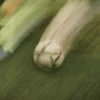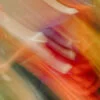Readers of books from the New York publisher Knopf will be familiar with the leaping dog that appears on their spines. In 1915, when Alfred Knopf started the firm, his wife Blanche was ‘crazy about borzois’, and she suggested the animal as the publisher’s colophon. Though the logo lingers more than a century on, Blanche’s enthusiasm for the breed was brief. ‘I bought a couple of them later,’ she told the New Yorker writer Geoffrey T. Hellman in 1948, ‘and grew to despise them. They were cowardly, stupid, disloyal, and full of self-pity, and they kept running away. One died, and I gave the other to a kennel.’ Hellman relates the story of a weekend in the country when Joseph Hergesheimer, a Knopf bestseller and one of the most critically lauded American novelists of the second and third decades of the twentieth century, came down to breakfast on Sunday morning complaining that the ‘moans and whimpers of the surviving borzoi’ had kept him up all night. ‘I bet Charles Scribner has no such goddam dog,’ he said. ‘The Knopfs exchanged glances,’ Hellman writes, ‘and Mrs Knopf went in for Yorkshire terriers.’
It’s an amusing anecdote and telling in a few ways. The Borzoi logo remains, and is one of the most recognizable symbols in corporate publishing. But its original meaning was erased, at least in the mind of the publisher and his wife, who as vice president, director and part owner of Knopf, took a strong hand in bringing in new authors. An advertisement from the 1920s reads: ‘Take home a Borzoi Book and spend a pleasant evening . . . It is obvious by their nature that books can never be uniform in quality of contents. But they must conform to certain well-defined standards of excellence to achieve the imprint of BORZOI . . . Look for the Borzoi label and then buy the book!’ Marketing of this kind has long been out of style. The image of the borzoi was immediately vestigial, and so, forty years after Alfred’s death, is the name Knopf itself.
Blanche’s line about her pets – ‘They were cowardly, stupid, disloyal, and full of self-pity, and they kept running away’ – you can imagine publishers saying it of authors or authors saying it of publishers. I have heard versions from both sides, though mostly from authors. The metaphor of the story, surely not lost on Hellman, is the irritation caused to the talent by the living representatives of management. The talent jokes about leaving for other management. It’s a chummy arrangement, an author weekending with his publishers in the country, but they’re still all actors in a marketplace.
Then there is the presence of Joseph Hergesheimer. I thought that I’d never heard his name until a couple of years ago when I first read Hellman’s profile of Alfred, but he is mentioned a few times by Alfred Kazin in On Native Grounds. Like the culture at large, I forgot about Hergesheimer. Kazin groups him among the ‘Exquisites’ championed by H.L. Mencken and George Jean Nathan after the First World War, along with James Branch Cabell, Thomas Beer, and Elinor Wylie. ‘The vogue of the new decadence was to seem shabby and vain soon enough,’ Kazin writes, ‘but it is easy to see now that it had its origin as a protest against the narrowness and poverty of even the most ambitious writing of the day.’ In place of ‘the evangelical note that had crept into pre-war modernism’ and ‘grubby provincialism and romanticism’ – think of Jack London and Theodore Dreiser – the Exquisites delivered glossy prose styles and glorified wealth as aristocratic amateurs. Kazin writes that Hergesheimer, ‘the slavish celebrant of the new rich, intoxicated’ the public ‘with endless visions of silver and brocade, introduced them to the very best people, and tittered verbosely on a veritable Cook’s tour of colonial America, nineteenth-century Cuba, and the feudal South’.
Hergesheimer’s third book, The Three Black Pennys, was the first original American novel that Knopf, whose initial specialty was bringing out translations of European works of modernism, published, in 1917. Into the 1920s, he was their bestseller, until his fortunes waned with the rest of the Exquisites. During the Depression, encomia to industrialists and contempt for the canaille were less in demand, and the style of the day turned in the direction of Hemingway. (Kazin remarks that Hergesheimer and Wylie inverted Hemingway’s aphorism, ‘Prose is architecture, not interior decoration.’) Clifton Fadiman later remarked that Hergesheimer’s novels were ‘deficient in mere brain-power’, but in 1962, when asked which American novels he cherished, Samuel Beckett said: ‘one of the best I ever read was Hergesheimer’s Java Head ’. Hergesheimer published his last book of fiction in 1934.
In the autumn of 1948, H.L. Mencken visited Hergesheimer at his home in Stone Harbor, New Jersey, between Atlantic City and Cape May. He found his friend drinking mug after mug of beer, suffering from an eye infection, and full of complaints about Knopf, which had let his books go out of print. ‘In theory, he has been at work on his autobiography, but in fact he has done nothing,’ Mencken wrote in his diary. ‘He has written nothing fit to print in more than ten years. It is a dreadful finish indeed.’ Hergesheimer died in 1954, and was buried on the South Jersey Shore. A friend of mine who hails from nearby and read a couple of Hergesheimer’s novels after coming across his name in one of Mencken’s books assures me that there’s a plaque by the beach, on a pleasant street with an ice-cream parlor and a mini-golf course, that bears the name of Hergesheimer. Such is the nature of most American literary immortality.
We could say that Knopf abandoned Hergesheimer or that history left him behind, that he failed to change with the times, or that the success, including eight film adaptations, that followed years of toil in obscurity in Pittsburgh, robbed him of the hunger that is crucial to an artist. We could, like Kazin, look at him dialectically, as a casualty in an unforgiving turn in the saga of American literary style. Certainly a glance at a few chapters of Java Head leaves the impression of a prose that Hemingway was born to demolish. Kazin’s quip about interior decoration holds: the novel opens with an eleven-year-old looking at all the fancy chairs in her family’s house. (There is some charm to the passage: it is the girl’s birthday and whereas all the different chairs enchanted her the night before – she sees one as a dragon, others as deacons and dwarfs – now as a big girl she sees them just as someplace to sit: omens of her author’s fall from grace.) But Hergesheimer’s story as we would tell it today is a story of the market.
Among publishers, editors, scholars, critics, and even writers themselves, the stories we tell about literature are more and more stories of the economy of prestige, of one generation’s preferences righteously overturning those of its predecessors. Inside the academy, professors attribute great power to the publishing industry and to creative-writing programs. The syllabi of university courses in literature are yielded to student preferences, redefining the objects of literary study as matters of consumer choice rather than recognizable aesthetic criteria. Outside the academy, critics begin to stake their worth on the size and devotion of their audiences. And in the journalistic sphere, two opposing modes have emerged: that of therapeutic literary careerism, on the one hand, as writers make public confessions about their struggles to survive in comfort as authors; and that of accusatory literary consumerism, on the other, as critics express dissatisfaction not with books themselves but with the ways books are marketed, usually to somebody else, somebody they don’t like very much, such as a stepparent or a person they kissed a few too many times and would rather forget.
These warped views of literature reflect a shared tendency to explain art with minimal reference to the art itself. Novels are instead considered as commodities and demographic specimens, the products of structures, systems, and historical forces. They become expressions of brands, their authors threadbare entrepreneurs. Fiction recedes behind the chatter it generates and is judged according not to its intrinsic qualities but to the sort of reader whose existence it implies. Authors are turned into role models and style icons, mythologized for their virtues, and crucified for their sins. The numbers, as if they have meaning, are counted. The dream is of literature that can be quantified rather than read.


Sign in to Granta.com.







